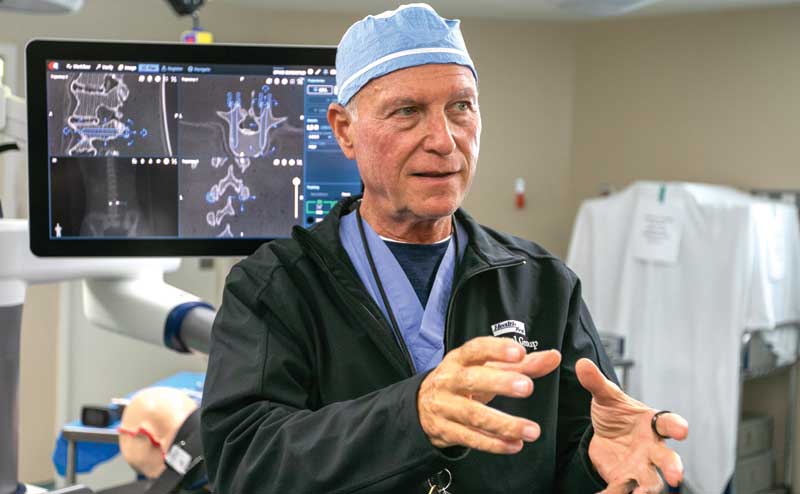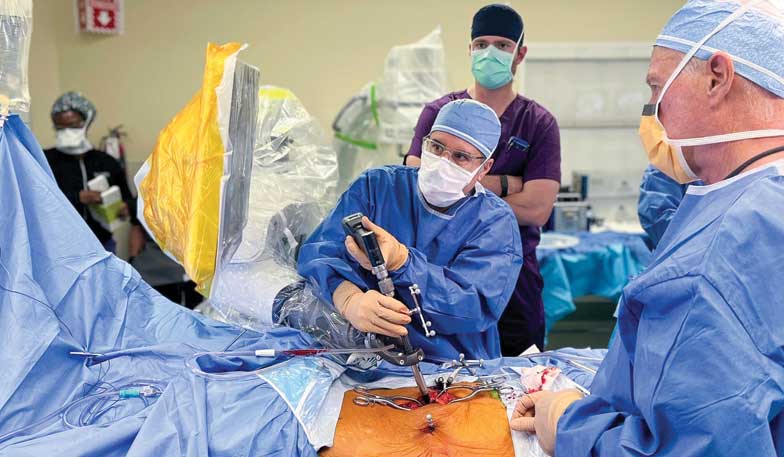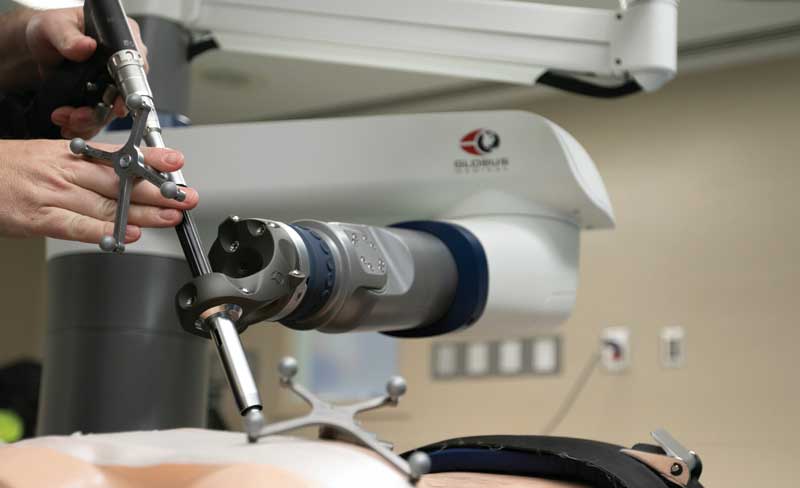HEALTH FIRST: In Spine Surgeries, Robotic Precision Reduces Risk, Raises Outcomes
By Space Coast Daily // March 23, 2023
MEDICAL SPOTLIGHT

Back surgery patients at Health First’s Holmes Regional Medical Center benefit from machine precision and real-time imaging in surgeries.
BREVARD COUNTY, FLORIDA – Jim Starner hadn’t been in a hospital in 60 years, so when he was wheeled into the operating room and saw “20 people and a room full of equipment,” it was eye opening.
“I understood the extent of the procedure.”
And what does he say today?
“I would recommend it.”
Starner’s procedure in December took place after Health First’s Holmes Regional Medical Center onboarded a first-of-its-kind robotic navigation platform for surgeries called ExcelsiusGPS.
ExcelsiusGPS is a navigable robotic arm that secures and guides surgical instrumentation, as well as an advanced imaging system that visualizes patients’ anatomy on a touchscreen surgeons can manipulate during surgery. The system also streamlines surgical workflow and reduces radiation exposure for patients, surgeons and staff.
“When doing complex surgeries of the spine, using robotics is the difference between hoping you will get an A on your final exam and knowing you will,” says Health First Medical Group Back Center Surgeon Richard Hynes, MD.

Greater Reliability of Outcomes
In the kind of spinal decompression surgery Jim Starner had, pedicle screws are inserted into the lumbar bones creating space in the canal through which the spinal cord and nerves run. With the addition of ExcelsiusGPS, surgeons spend less time attending to the screws and more time focused on decompression – the agent of pain relief.
“He was in a lot of pain,” Debbie Starner said of her husband. “You don’t want to push [your spouse] to have surgery, you have to let them be the decision maker, but you don’t realize how much they used to do until that pain is relieved.”
Among the primary benefits of ExcelsiusGPS, according to its manufacturer, Globus Medical, are greater reliability of outcomes, anatomical accuracy and zero Grades 1, 2 and 3 screw breaches.

Dr. Hynes said the system may be used in minimally invasive Transforaminal Lumbar Interbody Fusions (TLIFs), open Midline Lumbar Interbody Fusions, which Dr. Hynes pioneered, osteotomies to correct deformities of the spine, and neck, cervical and upper thoracic complex surgeries and fracture repairs.
“You can expect the same excellent results, and that outcome is less dependent on the patient’s unique anatomy,” said Truett Harris, a spine specialist with the company.
“For patients with scoliosis or anomalous anatomies that would make it difficult for surgeons to place screws and rods, this increases accuracy,” says Physician Assistant Damian Valez, who has been practicing about 20 years. “For any patient, it decreases risk and raises outcomes – it’s one of the most technologically advanced surgical systems available. It’s really a game changer.”
“I feel like a new man already,” Jim Starner said recently. “I turned 70 earlier this year, and before this I could hardly walk down the block with my grandkids.”

Rapid Recovery
Starner said the decision to have surgery wasn’t an easy one. More than anything, he “did not want anything to get worse of course,” as he had been warned it could from a family member.
Instead, within a few days he noticed the relief of the nerve pain traveling down his legs. Today, he says, he’s freely doing motions he was told could take months to recover.
“I’m not going to run any marathons, but I would like to get back to light workouts. I would like to pull weeds around the yard and play with my grandkids.”
He’s optimistic he will.
Visit HF.org/news to keep up with the latest at Health First.













